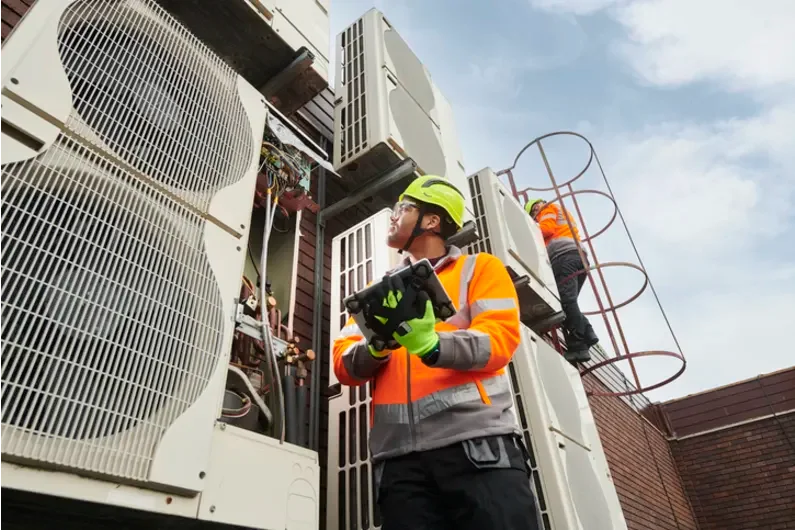Commercial construction projects involve complex processes and meticulous planning. Ensuring timely completion requires a detailed timeline. The commercial construction timeline outlines each phase, from initial planning to project closeout. It serves as a roadmap, helping stakeholders understand progress and anticipate potential delays. Effective timeline management boosts efficiency and ensures projects stay on track.
Understanding the phases within a commercial construction timeline is crucial. Each phase has specific tasks, deadlines, and milestones. By comprehending these components, project managers can allocate resources effectively and mitigate risks. This guide breaks down the commercial construction timeline, highlighting critical stages and best practices for managing them.
Initial Planning and Pre-Construction
In the commercial construction timeline, the initial planning phase is crucial for setting the foundation of the project. During this phase, project managers and stakeholders outline the project’s scope, budget, and timeline. This stage includes site evaluation, feasibility studies, and initial design concepts. Clear communication among stakeholders ensures alignment on project goals and expectations.
Next, pre-construction activities begin. This phase involves securing necessary permits and approvals from local authorities. Additionally, project managers finalize the design and prepare detailed construction plans. Pre-construction also includes selecting contractors and suppliers, establishing contracts, and setting up project logistics. This phase sets the stage for a smooth transition into the construction phase.
Effective planning and pre-construction activities minimize risks and prepare the project for successful execution. By addressing potential challenges early, stakeholders can prevent costly delays and ensure a more efficient construction process.
Design and Development
The design and development phase transforms initial concepts into detailed plans in the commercial construction timeline. Architects and engineers collaborate to create comprehensive blueprints and specifications. These documents guide construction activities and ensure the project adheres to regulatory requirements and industry standards.
During this phase, project managers review and approve designs, ensuring they align with the project’s goals and budget. Value engineering may occur, optimizing design elements to reduce costs without compromising quality. Stakeholder feedback is crucial, allowing for adjustments before construction begins.
Once the design is finalized, the development phase focuses on procuring materials and finalizing logistics. This includes ordering long-lead items and scheduling deliveries to align with the construction timeline. Proper planning during this phase ensures materials are available when needed, preventing delays.
Construction Phase
The construction phase is the core of the commercial construction timeline. This phase involves executing the detailed plans developed in earlier stages. Activities include site preparation, foundation work, structural framing, and installation of systems such as HVAC, plumbing, and electrical.
Effective project management is critical during construction. Regular site inspections and progress meetings help ensure the project stays on schedule and within budget. Addressing issues promptly prevents small problems from escalating into major delays. Communication among the project team, contractors, and stakeholders is essential for coordinating activities and maintaining momentum.
Safety is a top priority during construction. Implementing safety protocols and conducting regular training sessions protect workers and ensure compliance with regulations. A safe work environment minimizes accidents and keeps the project on track.
Quality Control and Inspections
Quality control and inspections ensure the project meets all standards and specifications. This phase involves regular inspections by project managers and third-party inspectors. These inspections verify that construction activities adhere to the approved plans and meet regulatory requirements.
Documenting quality control activities is essential. Detailed records of inspections, test results, and corrective actions provide a clear trail of compliance and accountability. Addressing issues promptly ensures defects are corrected before they impact the project’s progress or quality.
Final inspections occur towards the end of the construction phase. These inspections verify that all systems are operational and the project is ready for occupancy. Obtaining necessary certifications and approvals from local authorities is the final step before the project can be handed over to the client.
Project Closeout
The project closeout phase marks the completion of the construction project. This phase involves finalizing all contractual obligations and preparing for project handover. Activities include completing punch lists, final inspections, and obtaining occupancy permits.
During project closeout, project managers ensure all documentation is complete. This includes as-built drawings, operation manuals, and warranties. In addition, providing the client with comprehensive documentation ensures they have all the necessary information for maintaining and operating the facility.
Lastly, a successful project closeout involves a smooth transition to the client. Conducting a final walkthrough with the client ensures they are satisfied with the project’s outcome. Addressing any final concerns promptly ensures a positive handover experience.
Key Takeaways
– Initial planning and pre-construction are critical for setting the project foundation, aligning goals, and securing permits.
– Design and development involve creating detailed plans, value engineering, and material procurement.
– Construction is the core phase involving execution of plans, regular inspections, and maintaining safety protocols.
– Quality control and inspections ensure adherence to standards and regulatory requirements through regular inspections and documentation.
– Project closeout finalizes contractual obligations, prepares for handover, and ensures client satisfaction with comprehensive documentation.



